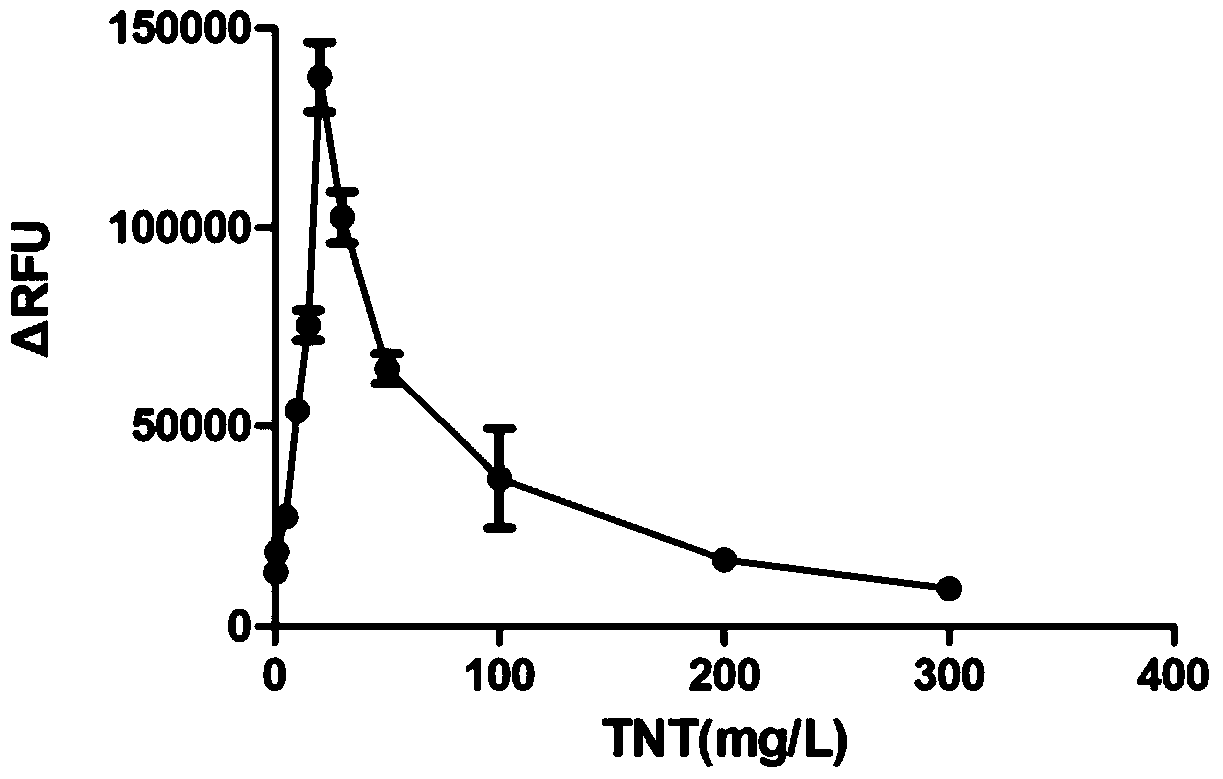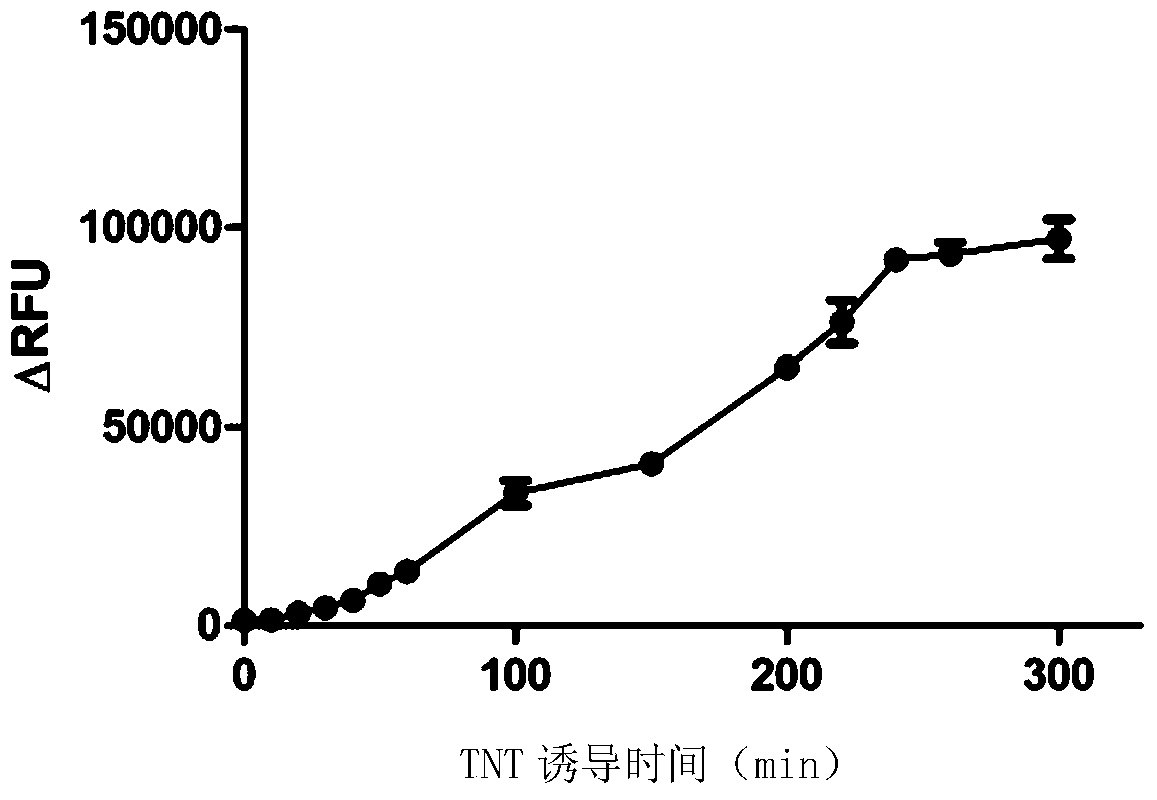Promoter recea4 and its application
A DNA molecule and sequence technology, applied in recombinant DNA technology, DNA/RNA fragments, introduction of foreign genetic material using vectors, etc., can solve problems such as high cost and TNT poisoning
- Summary
- Abstract
- Description
- Claims
- Application Information
AI Technical Summary
Problems solved by technology
Method used
Image
Examples
Embodiment 1
[0022] Embodiment 1, discovery of promoter sequence
[0023] 1. Extract the chromosomal genome of Escherichia coli K-12MG1655.
[0024] 2. Take the chromosomal genome obtained in step 1, partially digest it with restriction endonuclease Sau3AI (37° C., 2 hours), and then perform agarose gel electrophoresis to recover and purify DNA fragments below 2 kb.
[0025] 3. Take the pTJ629 vector (containing the luxCDABE gene with promoter deletion, and containing the broad-host replicon oriV and the stringent replicon pSC101), and perform single-digestion with the restriction endonuclease BamHI (BamHI can produce the same sticky end as Sau3AI ), recovering the vector backbone.
[0026] 4. Ligate the DNA fragment obtained in step 2 with the vector backbone obtained in step 3 to obtain a recombinant plasmid.
[0027] 5. Transform the recombinant plasmid obtained in step 4 into Escherichia coli DH5ɑ to obtain recombinant bacteria.
[0028] 6. Take the recombinant bacteria obtained in ...
Embodiment 2
[0030] Example 2, functional verification of the recEA4 promoter
[0031] 1. Acquisition of recombinant bacteria
[0032] 1. Synthesize the double-stranded DNA molecule shown in sequence 1 of the sequence listing.
[0033] 2. Using the double-stranded DNA molecule synthesized in step 1 as a template, a primer pair composed of F1 and R1 is used for PCR amplification to obtain a PCR amplification product.
[0034] F1: 5'-CG GGATCC ATCATTCACTGAACAA-3';
[0035] R1: 3'-GG GGTACCGGATCAGGTAGTCCAGAGTGG-5'.
[0036] 3. Digest the PCR amplified product obtained in step 2 with restriction endonucleases BamHI and KpnI, and recover the digested product.
[0037] 4. The vector pPROBE-TT was double-digested with restriction enzymes BamHI and KpnI, and the vector backbone of about 6.8 kb was recovered.
[0038] 5. Ligate the digested product of step 3 with the vector backbone of step 4 to obtain a recombinant plasmid. According to the sequencing results, the structure of the recombi...
PUM
 Login to View More
Login to View More Abstract
Description
Claims
Application Information
 Login to View More
Login to View More - R&D
- Intellectual Property
- Life Sciences
- Materials
- Tech Scout
- Unparalleled Data Quality
- Higher Quality Content
- 60% Fewer Hallucinations
Browse by: Latest US Patents, China's latest patents, Technical Efficacy Thesaurus, Application Domain, Technology Topic, Popular Technical Reports.
© 2025 PatSnap. All rights reserved.Legal|Privacy policy|Modern Slavery Act Transparency Statement|Sitemap|About US| Contact US: help@patsnap.com



